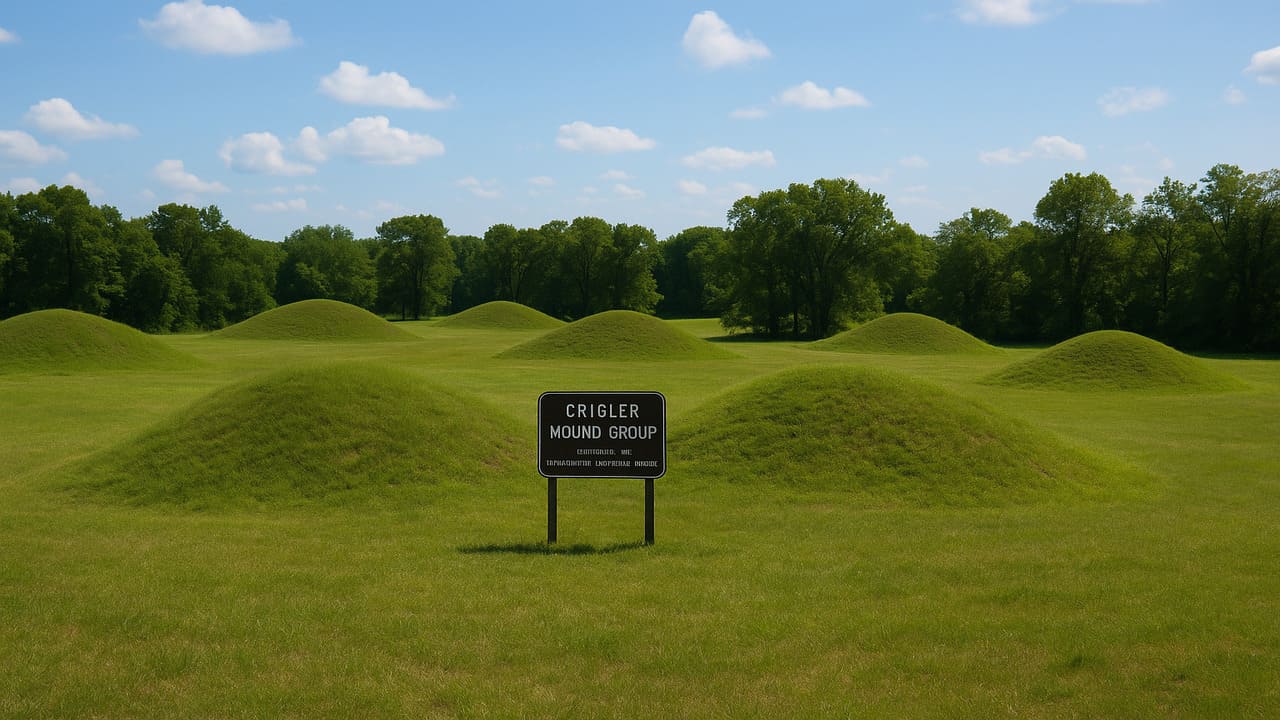
Visit MarkTwain Lake – The Crigler Mound Group, a cluster of seven earthen mounds, stands as a silent testament to a civilization that thrived long before European settlers ever set foot on North American soil. While not as widely known as the Cahokia Mounds to the east, the Crigler site is no less significant. For archaeologists, historians, and those interested in Native American heritage, this site remains an important cultural and historical marker an outdoor archive of human civilization.
These mounds are believed to have been constructed by Native American peoples of the Woodland period. Which spanned from around 1000 BCE to 1000 CE. The Crigler Mound Group offers a unique glimpse into the prehistoric past of the region. Showcasing the advanced societal and spiritual practices of the indigenous peoples who once called the rolling Missouri hills their home.
The Crigler Mound Group belongs to a broader tradition of mound-building that once spread across the central and eastern United States. These earthen mounds, often circular or rectangular in shape. Serve a variety of purposes: burial sites, ceremonial platforms, and territorial markers among them.
The seven mounds at Crigler were likely use as burial mounds. A theory supported by archaeological surveys that have uncovered evidence of human remains and artifacts. These findings suggest complex burial practices, possibly involving ritual offerings and spiritual ceremonies. The layout and size of the mounds also point to a hierarchical society one in which leaders, priests, or warriors may have been honor with more prominent resting places.
Unlike the towering pyramids of Mesoamerica or the stone monuments of Europe, the mounds may seem humble at first glance. Yet their construction required significant coordination, labor, and communal effort. Without the use of metal tools or beasts of burden. Native American builders transported tons of earth by hand or with woven baskets a remarkable feat that reflects deep cultural dedication.
Read More : Experience Magic at Skyline Sunset Rooftop Party Vol.2
As with many archaeological sites in North America. The Crigler Mound Group has faced threats from erosion, farming, and lack of public awareness. Fortunately, efforts have been made by local historians and preservationists to protect the site from development and to educate the public on its importance.
Preserving the Crigler Mounds is not just about maintaining an ancient landscape; it’s about recognizing the voices and civilizations that came long before our time. Every mound, every artifact, and every footprint preserved in this soil adds depth to the American narrative.
Beyond its archaeological value, the Crigler Mound Group offers a peaceful and contemplative experience for visitors. The surrounding area is tranquil and largely undeveloped. Allowing guests to walk slowly through the grass-covered mounds and imagine the generations of people who once gathered here.
The site is not designed to be a bustling tourist attraction there are no vendors or neon signs yet this simplicity adds to its charm. The mounds are best appreciated in silence, perhaps at sunrise or sunset. When the light casts long shadows that gently outline their contours.
Educators and students often use the site as a hands-on learning tool, bringing history lessons to life in a tangible way. Some teachers use the mounds to discuss early trade networks, farming techniques, and spiritual beliefs. Others explore the deeper questions of cultural memory, identity, and the responsibility of modern society to honor ancient heritage.
Read More : Stoutsville Recreation Area: A Quiet Gateway to Mark Twain Lake Adventures
Rather than closing this article with a conventional conclusion. It’s fitting to highlight how the Crigler Mound Group fits into a broader effort to connect cultural tourism and regional travel in Missouri.
As more travelers seek meaningful, off-the-beaten-path experiences. Sites like Crigler are becoming important stops on heritage trails and historical driving routes. Visitors to Mark Twain Lake often explore nearby points of interest like the Mark Twain Birthplace Historic Site or Mark Twain State Park. But few realize that within a short radius lies one of the state’s oldest human landmarks.
Local tourism boards are beginning to promote the mound group alongside other attractions. Encouraging a more holistic view of Missouri’s rich and diverse past. Some suggested itineraries include combining a morning hike at Crigler with an afternoon at the lake. Followed by dinner in nearby Perry or Monroe City.
This integration of natural beauty and cultural depth creates a well-rounded travel experience one that not only entertains but educates. And in doing so, it ensures that the Crigler Mound Group continues to be not just a relic of the past, but a living part of Missouri’s evolving story.